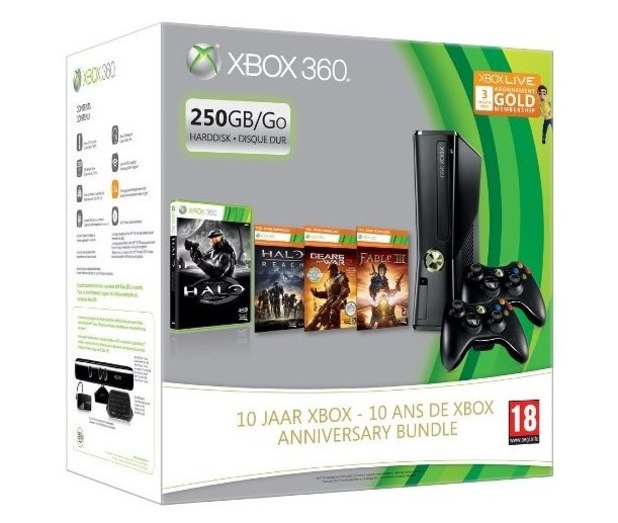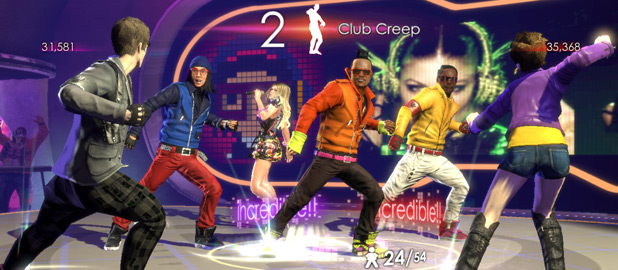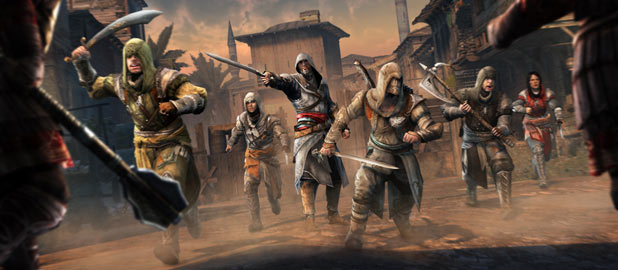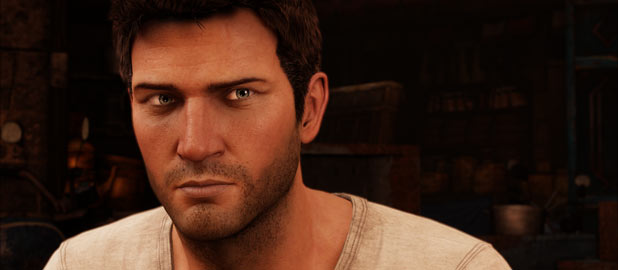‘Angry Birds Space’ confirmed for Samsung Galaxy Note

Angry Birds Space will be available for the Samsung Galaxy Note at launch.
The game will be made available for the hybrid device as part of a strategic partnership between the Korean tech giant and developer Rovio.
“We are thrilled to join the launch of the new Angry Birds Space game as an official mobile partner,” said Samsung executive Simon Stanford. “The Angry Birds games are among the most popular content that most smartphone users enjoy every day.”
Rovio vice president Ville Heijari added: “Angry Birds Space is probably the biggest product launch for Rovio so far, and we are excited to partner with Samsung for the blast off.
 “Angry Birds Space is a perfect companion for the great new smartphones from Samsung, and Samsung Galaxy Note will show off the game’s rich detail and intricate gameplay to the fullest.”
“Angry Birds Space is a perfect companion for the great new smartphones from Samsung, and Samsung Galaxy Note will show off the game’s rich detail and intricate gameplay to the fullest.”
Angry Birds Space will be released on March 22. Rovio has promised to reveal full details about the game on March 8.
Xbox 360 10-year anniversary bundle outed
Amazon France is listing the Microsoft collection for an early March launch, and prices it at €280.00 (£237.60).

© Microsoft Games
According to the product’s description, it comprises a 250GB Xbox 360, two wireless controllers, a boxed copy of Halo: Combat Evolved Anniversary, and digital versions of Halo: Reach, Gears of War 2 and Fable 3, as well as a three-month membership to Xbox Live Gold.
Microsoft launched the original Xbox in North America in late 2001, but it did not arrive in Europe and other PAL territories until March the following year. It was succeeded by the Xbox 360 in September 2005.
The platform holder previously denied reports that it will release a next generation follow-up to the Xbox 360 in 2012.
Amazon is listing the Xbox 360 10-year anniversary bundle for a March 6 launch.
…………
PS Vita Facebook app taken down from PSN

© Sony
Sony has removed the PlayStation Vita Facebook app from the PSN store.
The app has been unable to connect users to their Facebook page, returning an error code NP-13144-3.
“The Vita Facebook application has been removed from the store,” a Sony representative said.
“It will be republished once the difficulties Facebook have experienced have been resolved. Currently there is no timescale for this.”
The Vita Facebook app launched Wednesday, February 22, alongside the system and worked for much of the day.
Complaints of failed connections and error messages began Thursday before Sony removed the app today.
…………..
Channel 4 to launch ‘The Bank Job’ online game
Channel 4 is to launch an online game involving players answering general knowledge questions inside a virtual bank vault to win the chance to appear on a forthcoming live TV show.
The Bank Job, produced by Big Brother maker Endemol, is a new gameshow format that will air for six nights on Channel 4 in the first week of January, giving contestants the opportunity to “pull off the ultimate heist and walk away with a life-changing sum of money”.
An exclusive early application form to appear on the show can be secured by playing the online game, also called The Bank Job, which is launching soon on the Channel 4 website.

Online players will go head-to-head during tournaments, answering general knowledge questions in real-time to scoop the most virtual cash and escape the vault.
Each timed round will feature 25 safety deposit boxes. A correct answer to the question enables the player to select a box, which could contain a cash sum, or be empty, or give the chance to steal an opposing player’s money.
The winner is the player who leaves the vault with the largest amount of cash before the time runs out, but the game’s strategy and tactics come in with how long you decide to stay in the vault.
Leave too early and there could be too many boxes left for an opponent to plunder, but leave too late and your own cash could be at risk of being stolen, or locked in the vault.
As players compete online they will build a personal profile of their performance, which can be shared with friends via Facebook. The main aim is to become an Elite Player and unlock the application form for the live show, as well as the chance to enter a prize draw to win £10,000.
Tournaments will take place at various times during the day and players can keep up to date with the latest developments on The Bank Job Facebook and Twitter pages.
Some game tournaments will continue to run when the show starts in early next year, with the possibility that players could be on the show just days after winning online.
The Bank Job live TV gameshow, the successor to Channel 4’s popular Million Pound Drop Live, will take place in a real bank vault filled with hundreds of thousands of pounds in cash.
Each night, four rival contestants will compete against each other, with one emerging at the end of the show with a suitcase full of money, and the others leaving with nothing.
The Bank Job is produced by Remarkable Television, an Endemol company, while the online head-to-head game was built by Chunk Games and the live play-along game developed by Monterosa, the firm which created the successful Million Pound Drop Live accompanying game.
………………………………
The Black Eyed Peas Experience’ review (Xbox 360)
By Liam Martin
Also available on: Nintendo Wii
Developer: iNiS
Publisher: Ubisoft
Genre: Dance

The Black Eyed Peas Experience is the latest dance game to arrive on Kinect, the funkiest electronic device since the dancing flower pot. And while Fergie, will.i.am and the other ones may be used to platinum records and topping the music charts, the group’s virtual counterparts face some pretty stiff competition from recent video game releases Just Dance 3 and Dance Central 2.
Unfortunately, despite The Black Eyed Peas Experience proving itself to be a perfectly competent and enjoyable party game for hardcore fans of the band, we’re not sure it’s got the ‘Boom Boom Pow’ to hang with the genre’s heavy hitters.
As I’m sure most of you will have figured out by now, The Black Eyed Peas Experience is an all-singing, all-dancing video game homage to the chart-topping hip-hop/RnB act. Featuring nearly 30 songs spanning the group’s entire career – though it is inexplicably missing breakthrough hit ‘Where Is The Love?’ – players must mirror onscreen dance moves to earn points, fans and unlockables.
The problem with any band-specific music game, however (Guitar Hero: Metallica and The Beatles: Rock Band, for example), is that they only really work if you’re a big fan of the group. If you love the Black Eyed Peas, have all of their albums, know the lyrics to all of their songs, and even pre-ordered Cher Lloyd’s debut album before her duet with will.i.am was scrapped, then you’re in luck.
If you’re not a fan of the group, the game is enormously limited compared to the likes of Just Dance 3 and Dance Central 2, although there’s no denying that songs such as the aforementioned ‘Boom Boom Pow’, ‘My Humps’, ‘I Gotta Feeling’ and ‘Just Can’t Get Enough’ are infectious and funky enough to grace the very best rhythm action titles available today.
The gameplay also hits the right steps, ensuring that there is enjoyment to be had for all but the most ardent of Black Eyed Peas haters. The dancing mechanic isn’t particularly original or innovative – reminding us of a slightly less comprehensive version of Dance Central – but ticks all of the desired boxes. The Kinect sensor picks up dance moves accurately, awarding points based on the movement of pivotal body parts, though the scoring system is generous enough to allow for a small amount of improvisation (aka mistakes).
To make things a little easier, players can slow down troublesome moves and practice with a dance coach, while your onscreen assistant actually performs each step during transitions, a welcome change from the usual still-frame picture approach found in other games. If you’re not feeling the dancing, unedited and occasionally racy song lyrics scroll along the bottom of the screen, perfect if you fancy a good old-fashioned sing-song, or want to learn gibberish.
In terms of gameplay options, The Black Eyed Peas Experience features the usual quick play mode, perfect for competent and confident dancers who don’t seek coaching, and for co-op sessions with drop in-drop out multiplayer functionality. Players can also create their own routines from the 300 dance moves available and share them online, a nice touch, potentially adding a little extra challenge and longevity.
The game’s campaign mode, meanwhile, sees players seek approval from fans and the Black Eyed Peas by learning three sets of dance moves, before performing entire routines with the band. Earn enough fans, and you’ll receive bonuses such as new dance locations and items for your generic dancer’s wardrobe, which are also available by passing challenges, such as nailing poses and earning a certain amount of praise.
The campaign mode isn’t as enthralling and engaging as it could be, but is no worse than other single-player modes found in rival dance games, although that’s hardly a good thing, and an area that needs to be addressed if the genre is to succeed. Despite the inclusion of unlockable costumes, arenas and the likes, the game also feels short on band-specific extras and bonuses.
Whether or not you enjoy The Black Eyed Peas Experience largely depends on how much you like the group, and even then, it’s still missing a few of the band’s vintage songs and solo efforts. Despite its limitations, however, The Black Eyed Peas Experience is a perfectly capable and competent dancing title, on par with the majority of its rivals.
If you spend Saturday nights singing Black Eyed Peas songs into an old hairbrush, not only do you need to get out more, but you won’t regret picking up The Black Eyed Peas Experience. Everybody else, however, might be better suited rocking that body to any one of Kinect’s alternative rhythm action releases.
…………………………………………………………………………………
‘LEGO Harry Potter: Years 5-7’ review (PS3)
By Andrew Laughlin
Also available on: Xbox 360, PC, PSP, PS Vita, Wii, DS, 3DS
Developer: Travellers Tales
Publisher: Warner Bros Interactive
Genre: Action/adventure

LEGO Harry Potter: Years 5 – 7, as the title suggests, is more a continuation of an already-started adventure than a genuine sequel. LEGO Harry Potter: Years 1-4 reinvigorated the LEGO adventure games and is still regarded among the best titles in the series, but the second part offers a paucity of new ideas, or features. In this case, however, that is definitely not a bad thing.
Traveller’s Tales has ensured that the same winning mix of bubbly gameplay, simple puzzle solving and goofball characters is present and correct in a slick, colourful and fun adventure. Humourous cut scenes again tell the Harry Potter story in the unique LEGO way, while the abundance of secret items to uncover will keep young minds gripped for hours, both playing alone or with a friend.
LEGO Harry Potter Years 5-7 retains the same structure that was first introduced with the firstLEGO Star Wars game in 2005. The game covers the final four films in the Harry Potter series:The Order of the Phoenix, The Half Blood Prince, and Deathly Hallows Part 1, and Part 2. Each film has been split into six stages recreating their key events and battles. Players must do platforming, light combat and lots of environment-based puzzle solving, most of which involves the use of magic spells.
The puzzles generally focus on exploring the environment and connecting the dots. For example, you may need to collect a series of items to make a potion in a cauldron, giving Harry and his compatriots the super strength to open a heavy treasure chest. Specific spells are also frequently required, such as green ones to clear rogue vines or red ones to break down giant red walls.
There are many sections where you have to smash apart an item, and then rebuild the pieces into the thing you need. It’s all pretty straightforward, but the balance of challenge, reward and progression is once more judged just right. In between the story moments, players can roam around Hogwarts to collect items, do light side missions and just generally soak up the atmosphere, ghosts and all.
The game retains the light and humourous tone of previous LEGO games, despite the latter Harry Potter stories getting pretty dark in places as the young wizard reaches adolescence and faces his demons. For anyone who has not seen the Harry Potter films or read the books, the meandering plot could be a bit of a mystery. Curious expressions of shock, intrigue and other emotions by the LEGO characters (which strangely reminds one of the Tellytubbies) often only barely transmits what is going on, meaning some moments of significance could be lost. Although, it’s rather doubtful that many of the target audience will be Potter newbies.
………………………………………….
Assassin’s Creed Revelations’ review (Xbox 360)
By Liam Martin
Also available on: PS3, PC
Developer: Ubisoft
Publisher: Ubisoft
Genre: Third-person action

Assassin’s Creed Revelations marks the final game in Ubisoft’s successful franchise to be set in the Renaissance era, and the final chapter in the story of Desmond Miles and his past assassin relatives, Ezio and Altaïr. In a sense, that is a good thing, as Revelations feels remarkably similar to its predecessors, Assassin’s Creed Brotherhood and Assassin’s Creed II. A reboot is clearly needed, but this game marks a tremendous end to the series to date, improving on pretty much every aspect of the gameplay and presentation.
Another lengthy single-player campaign delivers jaw-dropping visuals, fluid gameplay and an engaging story jumping between characters and eras. The multiplayer has been moved forward in significant areas, bringing more story elements, and better matchmaking and progression. A few flaws stop this game short of perfection, but ultimately it represents a fantastic finale before the assassins and Templars do battle in a different time and place.
The opening of the game finds Miles, the modern-day man who can travel back in time to past assassins via the Animus system, in a comotose state, stuck in a limbo world that looks akin to a prog-rock version of Lost. You must guide Miles back to parts of Ezio and Altair’s lives to put together the pieces of their memories and bring him back to life.
The majority of the game is once more played as Ezio, who is tasked with tracking down five Masyaf keys left by Altair to unlock a library containing the Apple of Eden – the all-powerful icon that the assassins and the Templars have been fighting over for centuries. You will also jump back into the skin of Altair (the hero from the first Assassin’s Creed) for a series of missions that shine new light on the fate of the Apple, as well as take on a number of distinctive platforming missions as Miles.
Alongside the excellent depth and breadth of historical research that has gone into crafting the story, there are also a few nods to Inception. The time-splitting adventure flits around like Christopher Nolan’s magnificent movie and generally succeeds in keeping its focus, delivering a satisfying conclusion to many mysteries around the three characters, the Apple of Eden and the Templar-Assassin conflict.
The game’s core structure is essentially the same as previous titles in the series – the story plays out in an open world, this time the huge and incredibly detailed 16th century Constantinople, offering a string of core missions to push the story on, backed up by side-quests and general exploration.
Whilst a hugely impressive package, Assassin’s Creed Revelations is not without its problems. TheTower Defence sequences, a strategy game involving you defending the assassin’s ‘dens’ by placing bowmen, riflemen, barricades and captains to kill increasing waves of enemies, are reasonably well constructed, but feel somewhat a jarring change of pace. The switch to a strategy game is an interesting idea, but doesn’t sit very comfortably with the rest of the game (although these sections can mostly be avoided by bribing officials to avoid raising Templar awareness for an attack).
The assassins recruitment system has returned from the last game, meaning you can call in assassins to help you in tough fights and also train your colleagues up to be better killers. Certain points around the city enable you to send off assassins on non-playing missions to increase their skills, possibly even reaching the rank of master assassin. Overall, though, the assassins recruitment RPG is not as prominent as in Brotherhood.
The combat in Revelations is still not as fluid as Rocksteady’s Batman series or Naughty Dog’sUncharted. New counter moves and brutal finishes are welcome additions, but the system remains occasionally frustrating, particularly when getting ‘locked in’ to a fight.
The biggest issue with Revelations, though, is that the Renaissance era setting and mission structure are getting a bit tired. The frequency of familiar missions such as fetch quests and protection sequences is starting to grate slightly, while Ubisoft still hasn’t cracked the stealth sections, as there are the same frustrations of enduring repeated instant failures after getting detected by twitchy enemies. Let’s be clear, this is not meant to infer that Revelations is a boring game, far from it, but rather just to welcome Ubisoft’s sensitivity of the need for a reboot.
Alongside the genuinely massive single-player campaign (at least 15-20 hours for the story, more to do everything), Revelations once more has a multiplayer segment that is a unique thrill in gaming. The core premise of Assassin’s Creed multiplayer eschews the gung-ho Call of Duty run-and-gun in favour of a more tactical approach.
You are required to carefully stalk your prey, while also watching your back for others with the same idea about you. Stealthy kills are the order of the day, with top bonuses such as the ‘Incognito Kill’ for showing the most patience in approaching targets. In the core modes it is necessary to use the crowd of NPCs and the environment to disappear into the background, or, in contrast, look for any sign of unnatural movement from others to locate your prey.
The new game features welcome improvements to the levelling up system based around a bigger focus on story. By earning XP, players can unlock fragments of information behind Abstergo, the training facility using the Animus to put new Templar killers through their paces. The matchmaking system has been made more effective, while new social elements enable gamers to share their achievements and also send ‘dares’ to other players.
Unfortunately, though, the new modes are less successful. The introduction of versions of Deathmatch and Capture the Flag may have been requested by the community, but they just don’t seem to work so well with this flavour of multiplayer. Compared with the still excellent Wanted and Manhunt, the new modes feel less fun, as shoehorning the traditional multiplayer staples into the particular style of Assassin’s Creed gameplay just doesn’t quite work.
Assassin’s Creed Revelations is very much more of the same in Ubisoft’s acclaimed series, but that is certainly not a bad thing. There is so much to discuss in this game that it’s hard to get everything covered in a single review. The lengthy single-player campaign connects the dots between Desmond, Altair and Ezio in an always engaging and jaw-droppingly beautiful adventure.
The multiplayer has been improved with more story-based elements and better matchmaking, and although doubts remain over the merits of the new modes, it is still a unique and thoroughly addictive challenge in online competition. The time is definitely right to reboot the Assassin’s Creed franchise with new characters and settings, but Revelations marks a fitting finale to this magnificent franchise to date.
……………………………………………………………………………..
‘Sonic Generations’ review (PS3)
Also available on: N/A
Developer: Sonic Team
Publisher: Sega
Genre: Platform

Sonic the Hedgehog is arguably one of gaming’s most important icons. As Sega’s long-serving mascot, the spiky speedster helped shape the platform genre during the 16-bit era and went on to earn a place in the pop culture hall of fame. But it hasn’t all been success and glory for the anthropomorphic mammal. With a few notable exceptions, his 3D outings have failed to live up to their classic Mega Drive predecessors, with sections of the fan base suggesting it may be time for him to hang up those sneakers.
If nothing else, Sonic Generations is evidence that those calls for retirement were premature. Sega’s latest is a celebration of its flagship franchise, released to mark their mascot’s 20th anniversary. Not only does it provide classic 2D platforming reminiscent of the hedgehog’s early outings, it also proves that Sonic and 3D don’t have to be uneasy bedfellows.
Sonic Generations is a time-hopping adventure that takes the player on a nostalgic trip across Sonic history. The plot sees the modern incarnation of our hero and his Mega Drive-era forbear thrown into the mix together when an evil force infiltrates the space time continuum and imprisons Sonic’s friends in various time periods. The player controls both Sonics throughout the game, taking them through each level separately. You’ll tackle stages from the classic 2D perspective when playing as the original Sonic, while his modern counterpart’s outings are predominantly shown from the 3D viewpoint used in the likes of Sonic Unleashed.
The 2D segments are a joy to play through. Not only do they capture the essence of Sonic’s 16-bit adventures, they improve on them in some respects. Developer Sonic Team has cherry picked the best ingredients from the early games, given them several coats of polish and amped up the speed and intensity. There’s a hint of a lag with the jump mechanic, but it’s barely noticeable and rarely the difference between life and death.
It’s a similar story where the 3D segments are concerned. They aren’t quite the resounding success that the classic Sonic sections are, but they’re a welcome improvement on most of the character’s recent titles. Taking what worked from Unleashed and the enjoyable Sonic Colours, modern Sonic’s outings are blistering roller coaster rides peppered with ephemeral thrills. One minute you’re desperately trying to outrun a speeding juggernaut, the next you’re hitching a ride on the side of a helicopter. You never know what’s coming next, and it’s these thrilling set pieces that give these sections their energy.
………………………………………………………………………………………………………………………………………………………………..
‘Uncharted 3: Drake’s Deception’ review (PS3)

Also available on: N/A
Developer: Naughty Dog
Publisher: Sony Computer Entertainment
Genre: Action-Adventure
Nathan Drake has returned in what not only promises to be his greatest adventure, but also developer Naughty Dog’s biggest challenge. The studio had the unenviable task of topping 2009’s Uncharted 2: Among Thieves, a game that pushed boundaries of PS3 hardware and set new standards for the third-person adventure. You might wonder what ground was left to tread for a series that has taken gamers all over the globe, but Naughty Dog delivers surprises by the barrelful in this epic masterpiece.
Uncharted 3: Drake’s Deception had a herculean job on its hands beating its predecessor’s opening sequence. Scaling train wreckage overhanging a cliff is about as good as introductory stages get, so Naughty Dog went with a relatively subtle kick-off this time around, having Drake become entangled in a good old-fashioned barroom brawl at a backstreet London pub. This stage serves as an introduction to melee combat, and showcases how it’s been built on this time around.
Drake has at least a dozen new moves in his repertoire. You can now grab and throw enemies (useful when your back’s against the wall or when there’s a cliff edge nearby) and take them out by dropping down from above. In addition to this, all of Drake’s old moves have been refined. You can still perform single-button stealth takedowns and poleaxe foes with deft counters, but there are numerous new ways to do this, from pulling the pin on an enemy’s grenade, to swinging them headfirst into a wall.
The storyline plays out through cinematic cutscenes worthy of the big screen. Drake and his companions are searching for the legendary lost city known as the Iram of the Pillars, or the Atlantis of the Sands. It’s your usual mix of globe-trekking adventure, romance and, of course, deception, but there are a host of plot twists you’ll never see coming.
The relationship between Drake and his mentor Sully is the focal point here, and we learn a great deal about both adventurers. Chloe Frazer and Elena Fisher are recurring characters from the previous games, while hardboiled cockney thug Charlie Cutter and new villainess Katherine Marlowe make their debuts.
There is no shortage of epic setpieces as the story unfolds. You’ll race through an ancient temple while a swarm of deadly spiders encircles around you, engage in a gun fight on a sinking ship with the water rising up around Drake, and take on one of Marlowe’s cronies on board an airplane with the cargo hold springing open in mid-flight. These are just a few of the Uncharted 3‘s most memorable stages, sequences that will likely go down in history as defining moments of the current hardware generation.
Core gameplay still involves platforming, puzzle-solving and gunplay, yet it feels like the developers have perfected that formula here by throwing out what didn’t work before and building on what did. The awkward stealth moments are gone, replaced by the element of choice. If you want to creep around the levels and surreptitiously pick off guards you can, though the all-guns-blazing approach can be just as effective.
For all of its triumphs, Uncharted 3 isn’t a flawless game. The linear platforming might feel restrictive to players who favour creativity, and the game dictates its pace throughout. It decides whether you should be running or walking in each level, which compromises freedom somewhat. The issue with Drake becoming overly clingy with the scenery when you enter cover mode remains. It doesn’t crop up often, but when it does it usually means you’ll be peppered with bullets.
Despite these minor gripes, Uncharted 3: Drake’s Deception is a masterpiece and a strong contender for game of the year. Like its predecessors, it pushes the boundaries of what’s cinematically possible in the medium of video games, and is a thrill ride from start to finish. This is everything Uncharted fans have come to expect for the series, and much more.
………………………………………………………………………………………………………………………………………………………………





